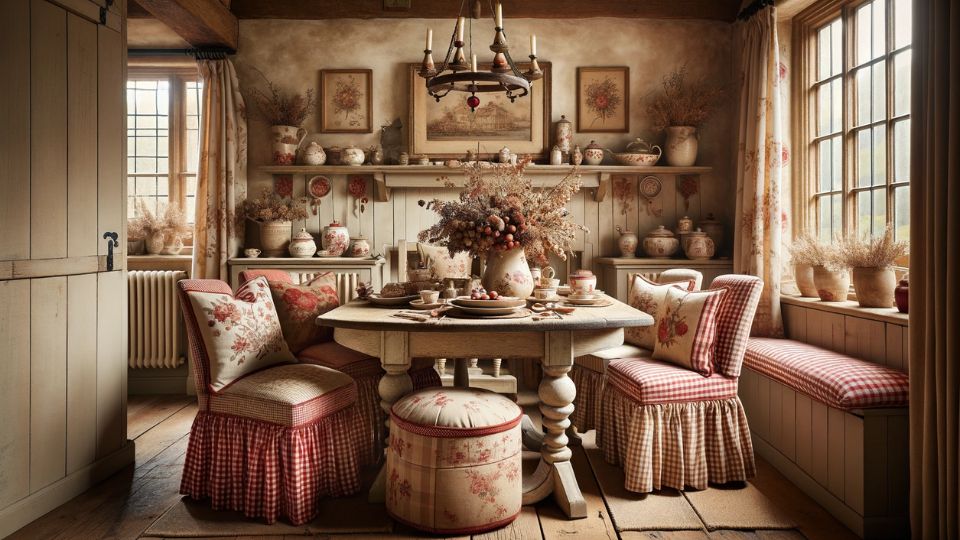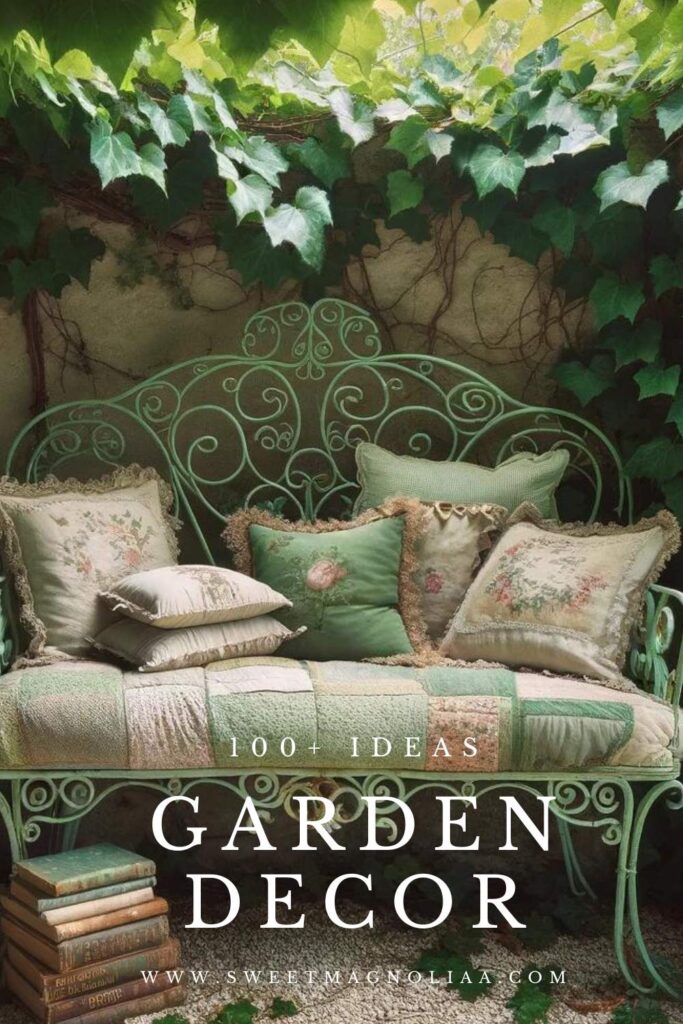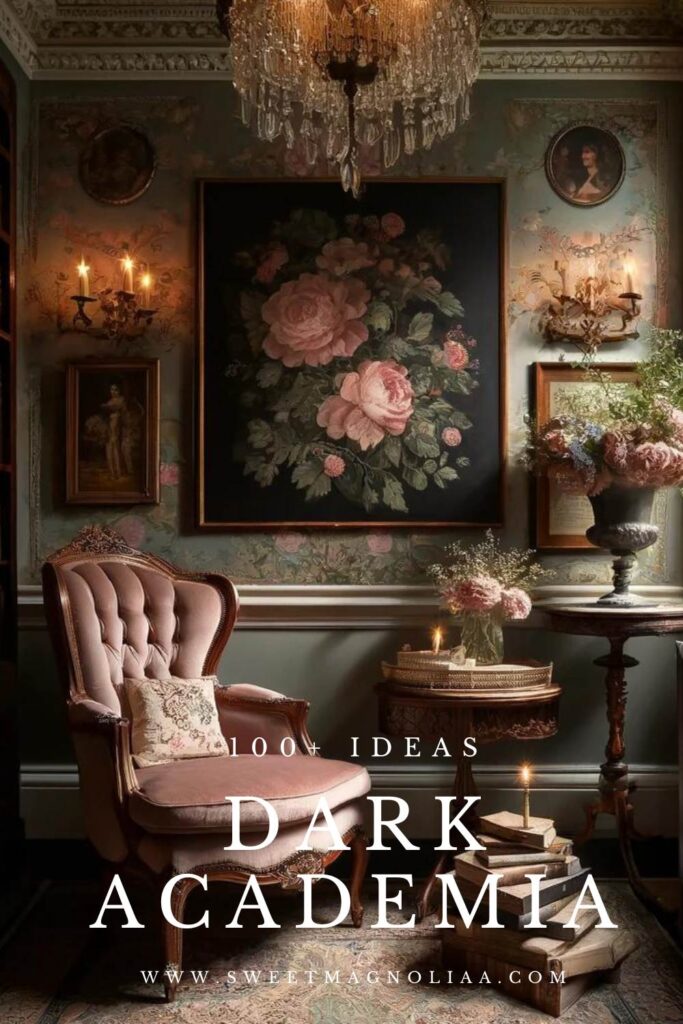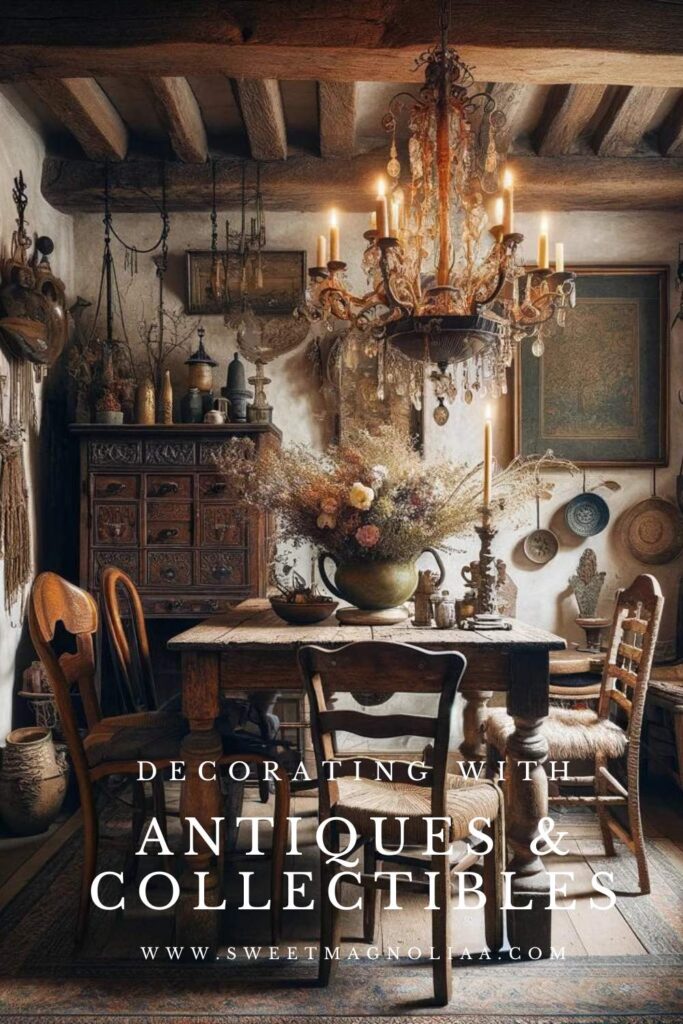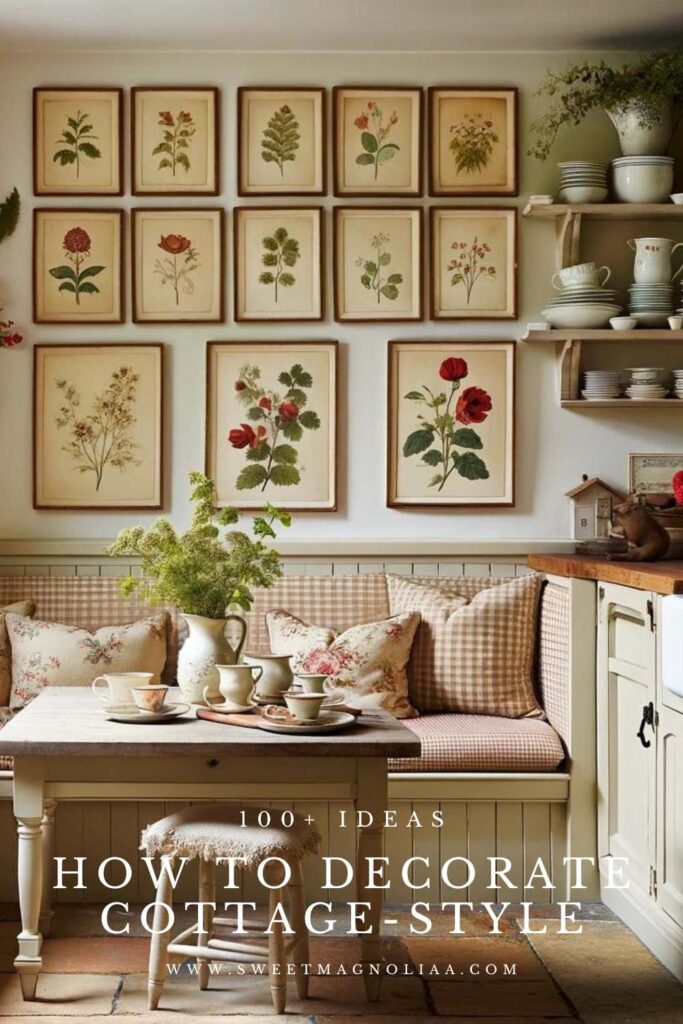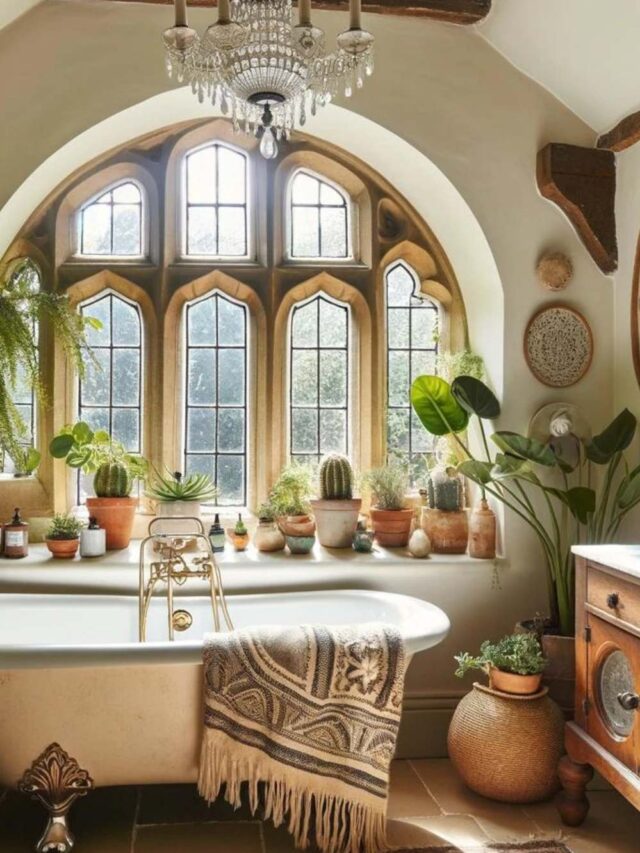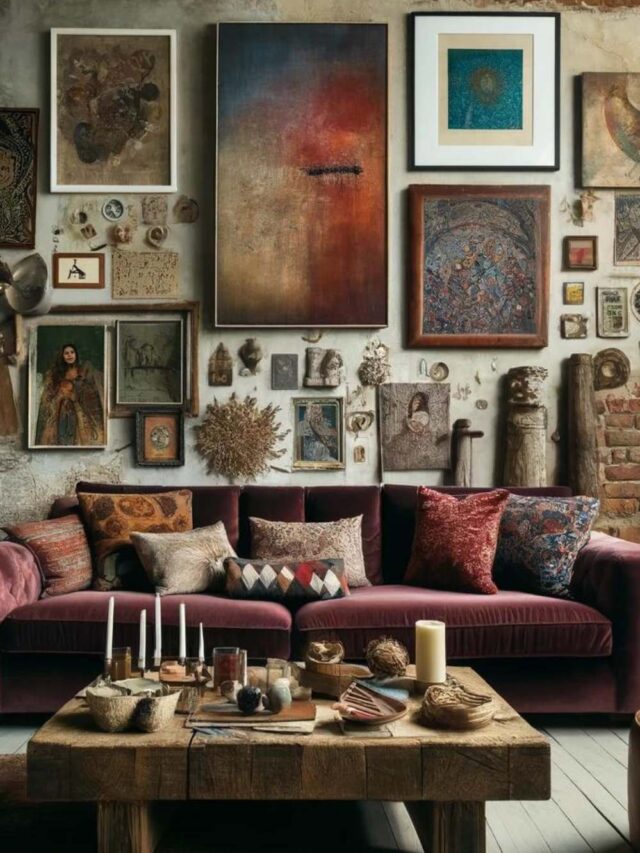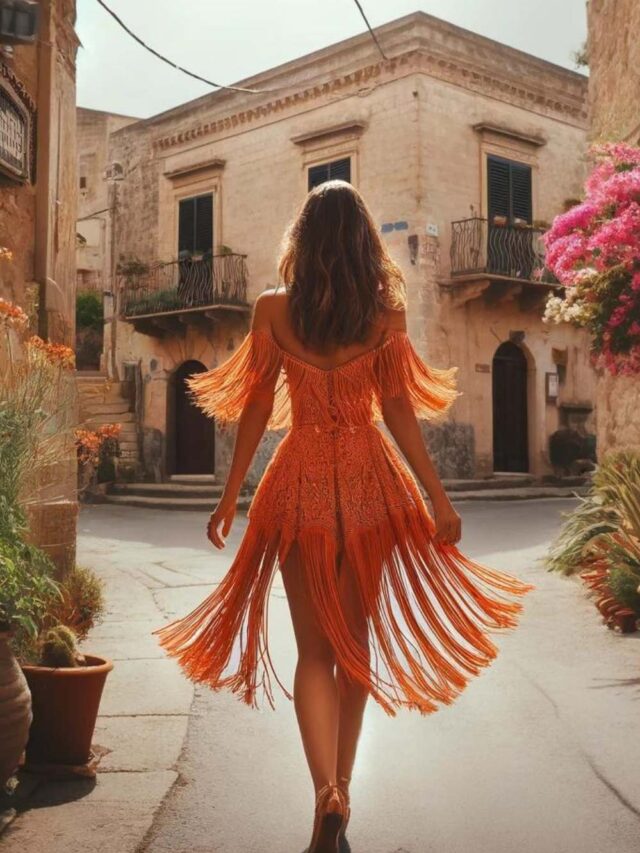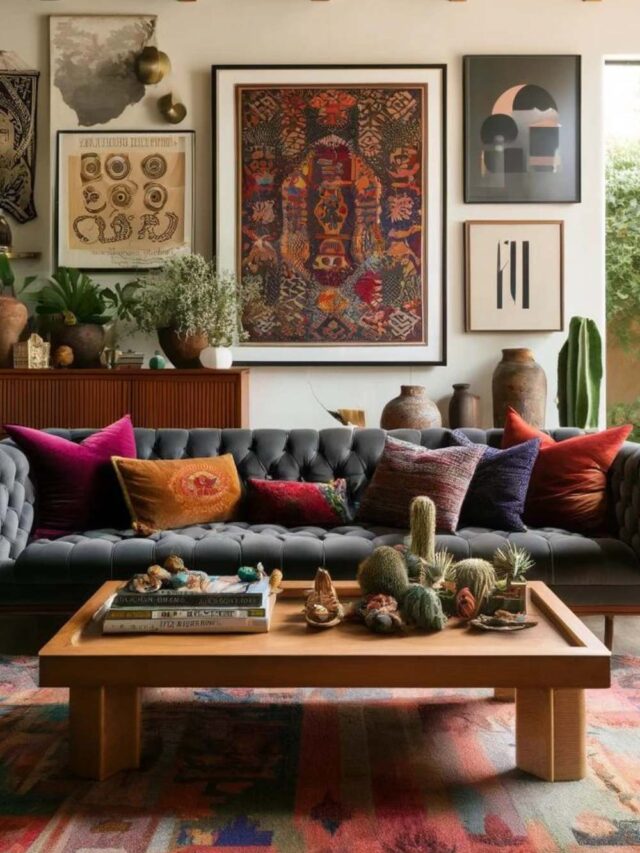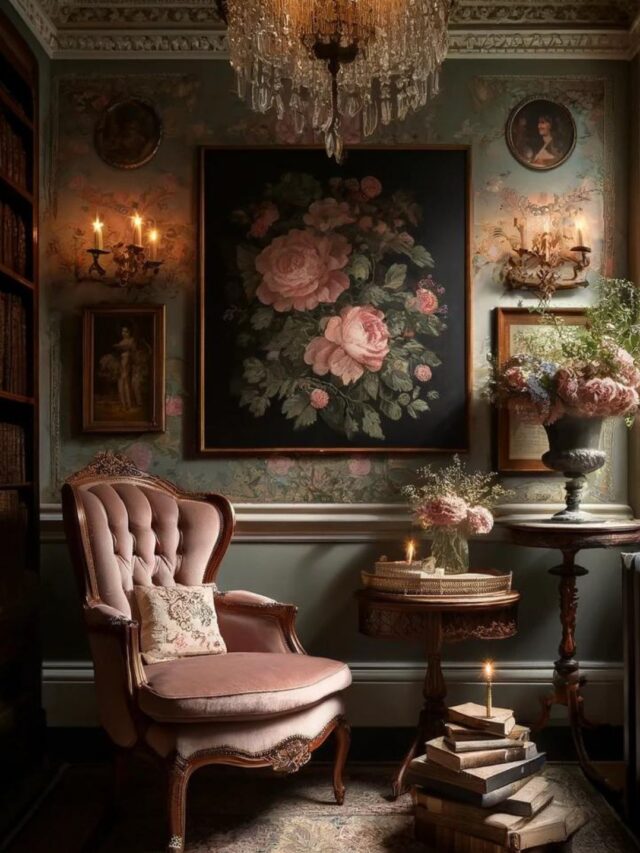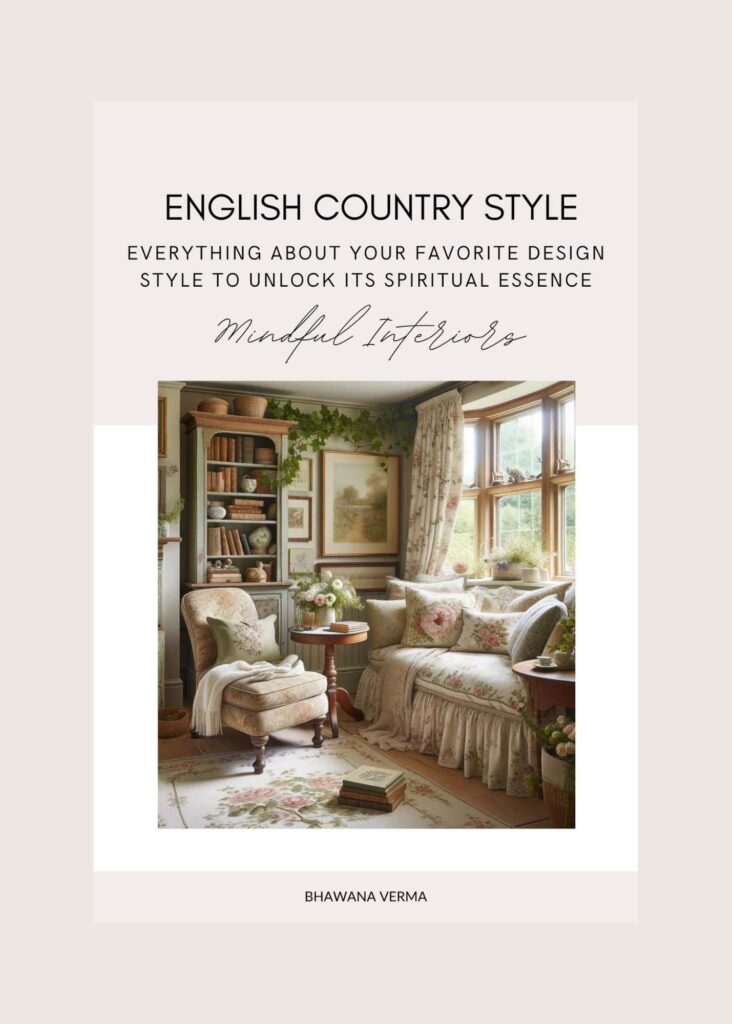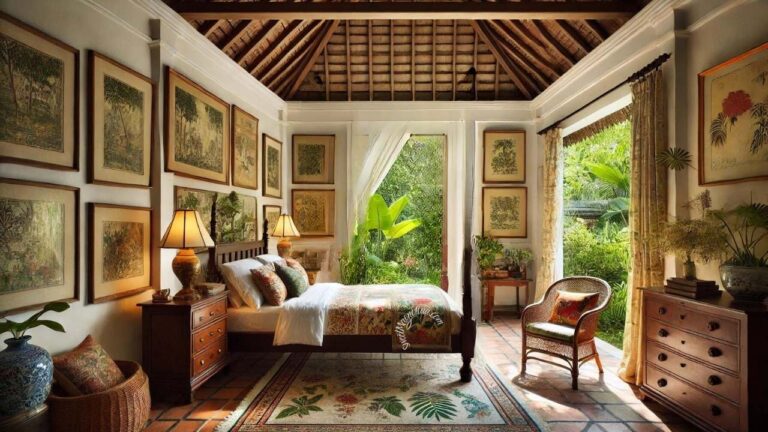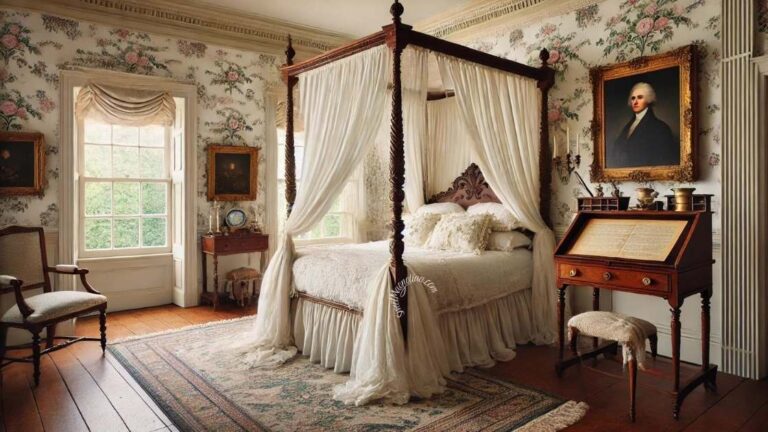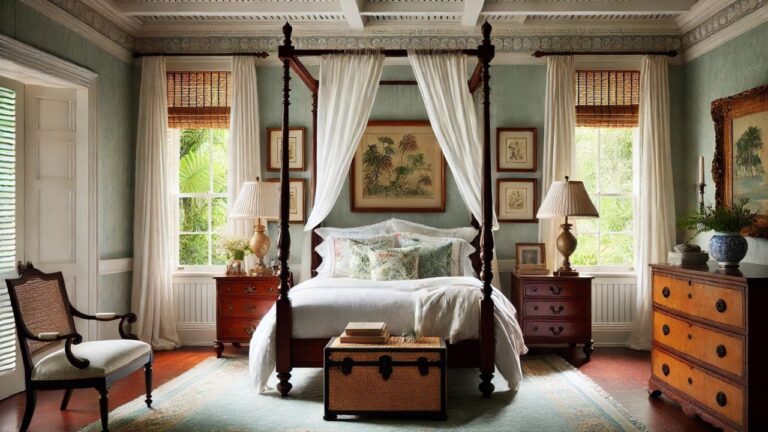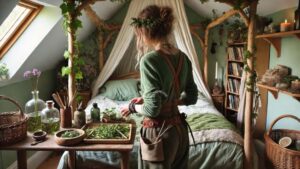Embracing the Charm of English Cottage Style: A Journey Through Patterns
Have you ever found yourself captivated by the quaint charm of an English cottage, with its cozy nooks and gardens blooming with untold stories? The secret lies in its timeless patterns – chintz, gingham, plaid, and florals. These are not just designs; they are the heartbeats of a home where every corner tells a story of warmth, comfort, and tradition. Today, let’s unwrap these patterns together, discovering how they can transform our spaces into havens of beauty and tranquility.
The English cottage style, with its distinctive blend of comfort and quaint aesthetics, has been a beloved staple in the world of interior design. It’s a look that celebrates simplicity, coziness, and a connection to nature. To successfully revive this style in a modern context, it’s essential to start with a foundational understanding of the key patterns and motifs that define it.
Decoding English Cottage Patterns: From Florals to Gingham
Before we dive into modernizing the English cottage style, let’s explore the traditional patterns that are synonymous with this timeless look:
1. Floral Pattern
Floral patterns, with their diverse expressions of beauty and nature, have long been a cornerstone of interior design, embodying vitality, elegance, and the seamless connection between the indoors and the natural world outside. These patterns range from delicate, intricate designs that mimic the fine details of individual flowers to bold, vibrant prints that capture the essence of a wild garden in bloom. The versatility of floral patterns allows them to transcend styles and periods, making them a timeless choice for adding life and color to any space. In the realm of English cottage style, florals play a crucial role, infusing spaces with a sense of romance, warmth, and the comforting embrace of nature.
The charm of floral patterns in English cottage decor lies in their ability to create a welcoming and homely atmosphere, reminiscent of a countryside retreat. They are often paired with soft, pastel color palettes and natural textures, such as wood and linen, to enhance their soothing and inviting quality. Floral patterns can be introduced through wallpapers, upholstery, curtains, and even crockery, each element contributing to the narrative of a space that celebrates the beauty and simplicity of rural life. In modern interpretations, floral patterns are sometimes scaled up or reimagined in contemporary color schemes, bridging the gap between traditional charm and modern sophistication. Regardless of their application, floral patterns remain a beloved choice for those looking to bring the serenity and joy of nature into their homes.
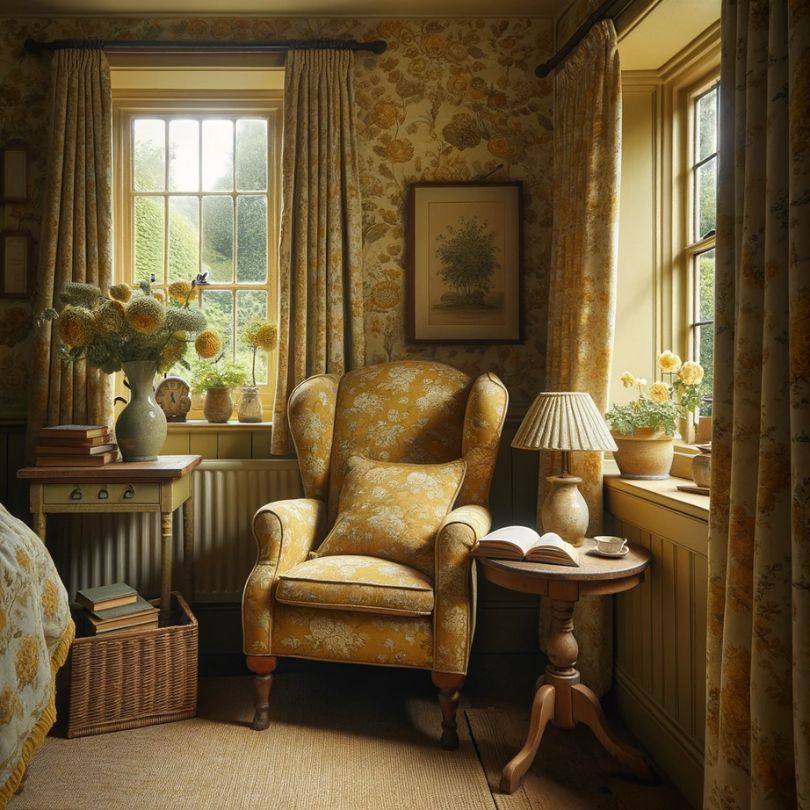
2. Gingham Pattern
Gingham is quintessentially associated with English cottage style, embodying the essence of charm, comfort, and rustic simplicity that this design aesthetic celebrates. Characterized by its checked pattern of white and a bold color, gingham brings a timeless, cheerful vibe to interiors. Its origins can be traced back to Southeast Asia, but it became popular in Europe in the 17th century and has since been a staple in English fabrics and interior design.
The pattern’s simplicity and versatility make it a perfect fit for the English cottage style, where it can add a cozy, homey feel to any space. Gingham is often used in textiles like curtains, tablecloths, and upholstery, as well as in accessories and bedding. Its ability to blend with other patterns, such as florals and stripes, without overwhelming the space, makes it a beloved choice for those aiming to achieve a balanced, welcoming, and unpretentious interior. The appeal of gingham lies in its ability to evoke nostalgia while remaining fresh and contemporary, making it an enduring favorite in cottage-style decor.
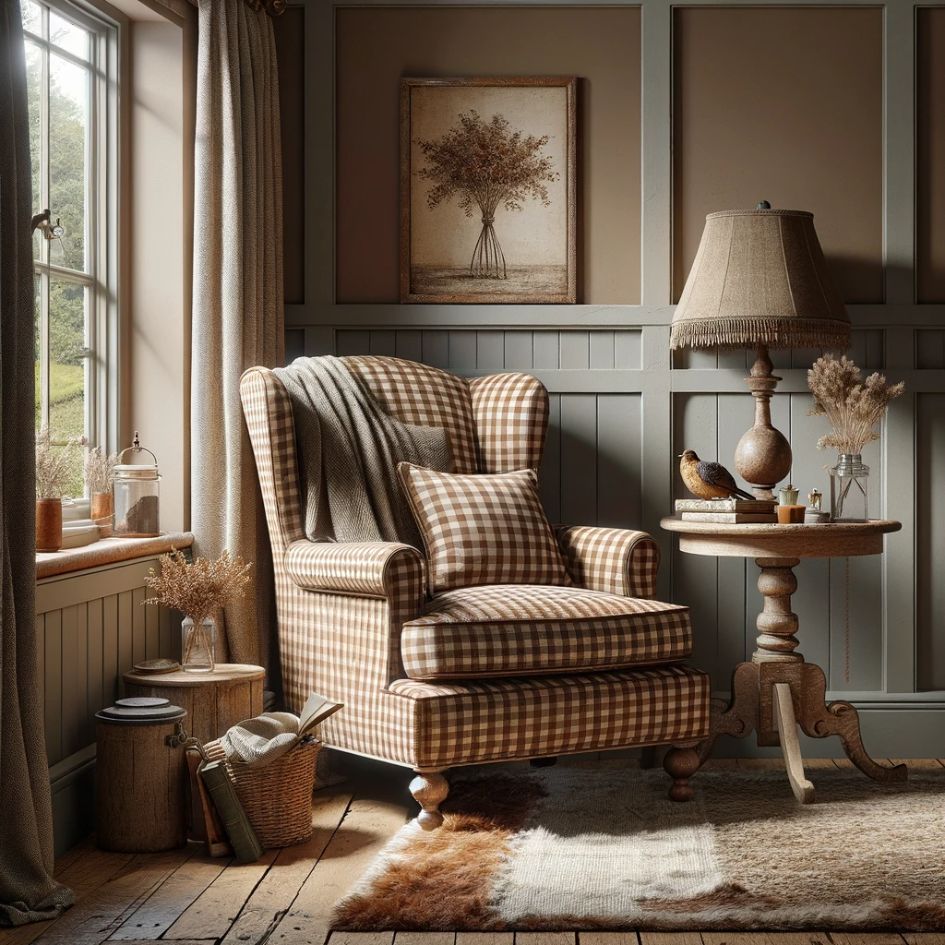
3. Plaid Pattern
The plaid pattern, with its intersecting lines and varied colors, carries a rich history and a timeless aesthetic that has traversed centuries and cultures. Originally stemming from the Scottish tartan, each unique to its clan, plaid has evolved beyond its Celtic roots to become a beloved motif in various aspects of design, from fashion to interiors. Its geometric precision and the interplay of colors offer a visual appeal that is both striking and familiar. In interior design, plaid embodies warmth, comfort, and a sense of tradition, making it a favored choice for creating inviting spaces that feel like home.
In the context of English cottage style, plaid plays a pivotal role in adding texture and depth to the quaint and cozy ambiance characteristic of this decor. Its versatility allows it to be incorporated in a myriad of ways, from upholstered furniture and window treatments to blankets and pillows. Plaid complements other rustic elements such as wood, stone, and floral patterns, seamlessly blending the old-world charm with the practicality of modern living. Whether in muted tones for a subtle, understated look or in bright, bold hues for a more dramatic effect, plaid enriches the cottage aesthetic with its rich layers of history and comfort, inviting a sense of nostalgia and warmth into any space.
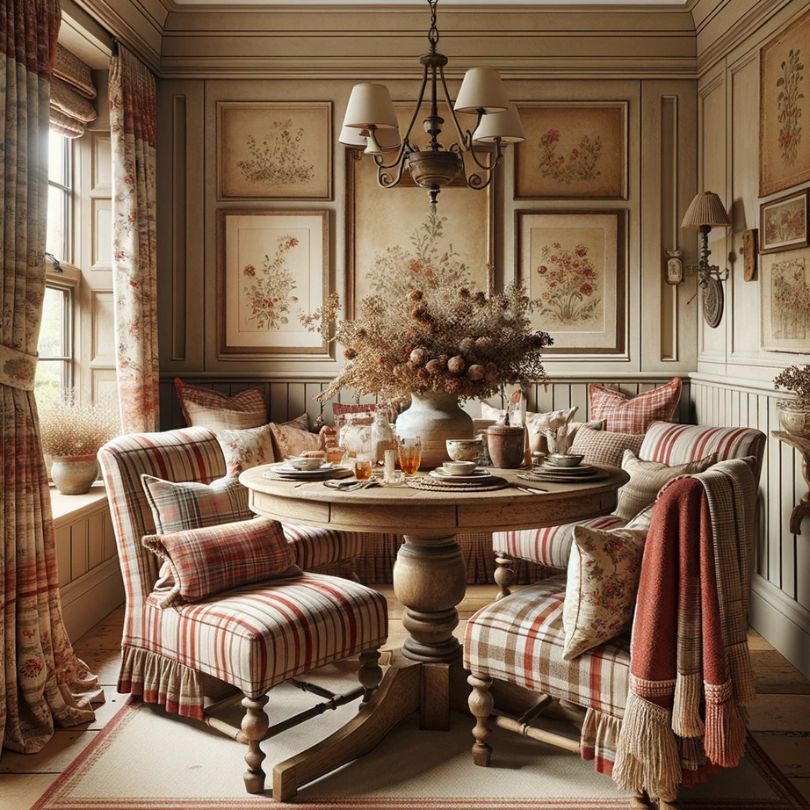
4. Stripes Pattern
Stripes, in their myriad forms and orientations, bring a sense of structure and rhythm to interior design, offering a visual narrative that is both dynamic and harmonious. This pattern, characterized by its parallel lines of varying widths and colors, stands as a testament to the power of simplicity in design. From the classic Breton stripe inspired by French naval uniforms to the bold, graphic lines seen in contemporary decor, stripes have the unique ability to adapt to various aesthetic contexts, making them a versatile choice for any interior. In English cottage style, stripes serve as a grounding element, balancing the florality and ornateness typical of the genre with their clean, linear form.
The beauty of incorporating stripes into English cottage decor lies in their ability to create visual interest without overwhelming the space. Whether used in soft, muted tones for a subtle backdrop or employed in vibrant hues for a striking contrast, stripes can complement the rustic and cozy elements that define cottage style. They can elongate a room when applied vertically, or make it appear more expansive when used horizontally. Stripes find their way into cottage homes through wallpapers, textiles, and accessories, harmonizing with natural materials and soft, pastel colors to evoke a sense of calm and order. The adaptability of stripes — able to be both bold and understated — ensures that they remain a timeless and enduring pattern in the ever-evolving narrative of interior design.
Modernizing English Cottage Decor: A How-To
With an understanding of these classic patterns, let’s explore how to weave them into a modern home:
1. Balanced Pattern Play
Combine these traditional patterns with contemporary design elements. For instance, pair a bold floral-printed armchair with a modern, minimalist sofa.
2. Fresh Color Schemes
Reinterpret classic patterns in new color palettes that fit modern tastes. Think of pastel-colored ginghams or florals with unexpected accents.
3. Accentuating with Wall Decor
Use traditional patterns in unexpected places, like a framed piece of toile fabric or a series of striped or plaid prints as wall art.
4. Textural Contrast
Mix materials and textures. Place a damask cushion on a leather couch, or drape a velvet throw over a gingham-upholstered bench.
5. Fusion of Furniture Styles
Introduce cottage patterns through accent pieces, such as a contemporary lamp with a toile shade or a modern table with a plaid runner.
6. Curated Antiques
Select antiques that feature these patterns and display them as focal points in a room that otherwise has clean lines and a neutral color scheme.
By starting with a solid grasp of the traditional English cottage patterns, you can thoughtfully curate a space that honors the past while fully embracing modern living. This blend of old and new creates a home that’s not only stylish and current but also rich with character and warmth.
Featured Video On How to Decorate in English Country Style
FAQs on English Cottage Style Patterns
What are the key patterns associated with English Cottage style?
English Cottage style is renowned for its use of cozy, traditional patterns that evoke a sense of comfort and homeliness. The key patterns include florals, gingham, plaid (also known as tartan), and chintz. Each pattern contributes to the overall warmth and welcoming atmosphere typical of cottage interiors.
How can I incorporate floral patterns into my home?
Floral patterns, a hallmark of the English Cottage style, can be incorporated through wallpapers, upholstery, curtains, and bed linens. Opt for soft, pastel-colored florals to create a soothing atmosphere or bolder blooms for a more vibrant look. Mixing floral patterns with solid colors can help balance the overall aesthetic.
Is gingham suitable for all rooms in a cottage-style home?
Gingham, with its simple checkered pattern, is versatile and suitable for nearly every room in a home styled after the English Cottage theme. It works particularly well in kitchens for tablecloths and curtains, in living rooms for throw pillows, and in bedrooms for bedding. The key is to choose colors that complement the room’s overall color scheme.
Can plaid patterns be mixed with florals in English Cottage decor?
Yes, plaid patterns can beautifully complement florals in English Cottage decor, creating a layered and textured look. To successfully mix these patterns, maintain a consistent color palette across the designs. Use plaid in smaller accents, like throw blankets and pillows, against a more dominant floral backdrop for a cohesive look.
How do I use chintz in modern English Cottage interiors?
Chintz, with its glazed finish and elaborate floral designs, can add elegance to modern English Cottage interiors. Use chintz in moderation to avoid overwhelming the space—consider it for statement pieces like an upholstered armchair, cushions, or a set of curtains in a room with otherwise muted tones.
Can English Cottage patterns be incorporated into a small space without it feeling cluttered?
Absolutely! The key to incorporating English Cottage patterns into a small space without overwhelming it is to focus on scale and balance. Choose one primary pattern as the focal point and complement it with smaller, simpler patterns in similar colors. Utilize solids and neutrals to break up patterns and create breathing space.
Are there any rules for mixing different patterns in English Cottage style?
While there are no strict rules, a good guideline for mixing patterns in English Cottage style is to vary the scale of patterns and keep a cohesive color scheme. Start with a large-scale pattern as the foundation and add in medium and small-scale patterns as accents. This approach helps create depth and interest without overwhelming the space.
How do I choose the right colors for English Cottage style patterns?
Choose colors that reflect the cozy and inviting atmosphere of an English Cottage. Soft pastels, earthy neutrals, and rich, warm tones work well. Look to nature for inspiration, incorporating greens, blues, yellows, and reds. Consistency in color across different patterns ensures harmony in the overall design.

